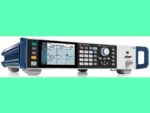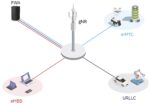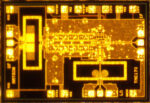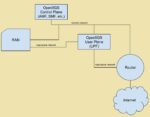The SMB100B series from Rohde & Schwarz produces microwave carriers to 40 GHz. Test-instrument manufacturer Rohde & Schwarz introduced a series of four microwave signal generators, the SMB100B. The instruments come with four models depending on top frequency: 12.75 GHz, 20 GHz, 31.8 GHz, and 40 GHz. All models support AM, FM, phase, and pulse […]
Telecommunications
How do 5G eMBB and FWA data services compare?
Fixed-wireless access is a special use case of enhanced mobile broadband, one of the three use cases specified for 5G. FWA brings different challenges for deployment than eMBB.
Mixer converts 20 GHz to 80 GHz frequencies down to IF
mmTron Inc. announced an innovative active mixer providing frequency conversion from 20 to 80 GHz. In addition to its bandwidth, the TMC170D stands out with 0 dB average conversion loss across the band with an LO drive of only 0 dBm. The InP semiconductor-based design achieves RF and LO coverage from 20 to 80 GHz…
6G: Sub-THz device reaches 100 Gbps data rate
NTT DOCOMO, INC., NTT Corporation, NEC Corporation, and Fujitsu Limited jointly announced the development of a top-level wireless device capable of ultra-high-speed 100 Gbps transmissions in the 100 GHz and 300 GHz sub-terahertz bands. The four companies have been jointly conducting R&D on sub-terahertz devices since 2021 in anticipation of the coming 6G era. To…
mmWaves bring interconnect challenges to 5G and 6G
Signals in the mmWave range require extra care and more expensive components than at sub-6 GHz frequencies.
Build a 5G Open RAN test lab with open-source software tools
Open-source software provides network components that you can use to simulate 5G network functions from the network core to the radio. Developing and deploying a laboratory infrastructure to support testing 5G and open radio-access network (Open RAN) systems can present a daunting and complex task. Prior to Open RAN, this task was only possible by…
Flexible PTP profiles ease the transition to 5G
5G brought architecture changes that require synchronization. Depending on the location and network site, those timing requirements require different PTP profiles and PTP capacity.
Fuse line adds 0201 packages, protects 28 mA to 200 mA
KYOCERA AVX extended its Accu-Guard II Low-Current Fuses with new 0201 case sizes that deliver the industry’s lowest current ratings. Accu-Guard II Low-Current Fuses utilize thin-film technology to achieve precise control over the components’ physical and electrical characteristics — beyond what’s possible with standard fuse technologies — and deliver extremely low current ratings in compact […]
Compact SSDs support PCIe Gen 4×4 with enhanced data integrality and i-temp compatibility
Silicon Motion Technology Corporation introduced the new generation FerriSSD NVMe PCIe Gen 4 x4 BGA SSD. This latest solution features support for i-temp and integrates advanced IntelligentSeries technology, delivering robust data integrity in extreme temperature environments that meet the rigorous demands of industrial embedded systems and automotive applications. The latest FerriSSD BGA SSD supports PCIe […]
PCIe waveform generator card produces up to 20 sine waves
Spectrum Instrumentation has released a new firmware option for its range of versatile 16-bit Arbitrary Waveform Generators (AWGs) with sampling rates up to 1.25 GS/s and bandwidths up to 400 MHz. The new option costs $1200 and allows users to define 23 DDS cores per AWG-card, that can be routed to the hardware output channels. […]










